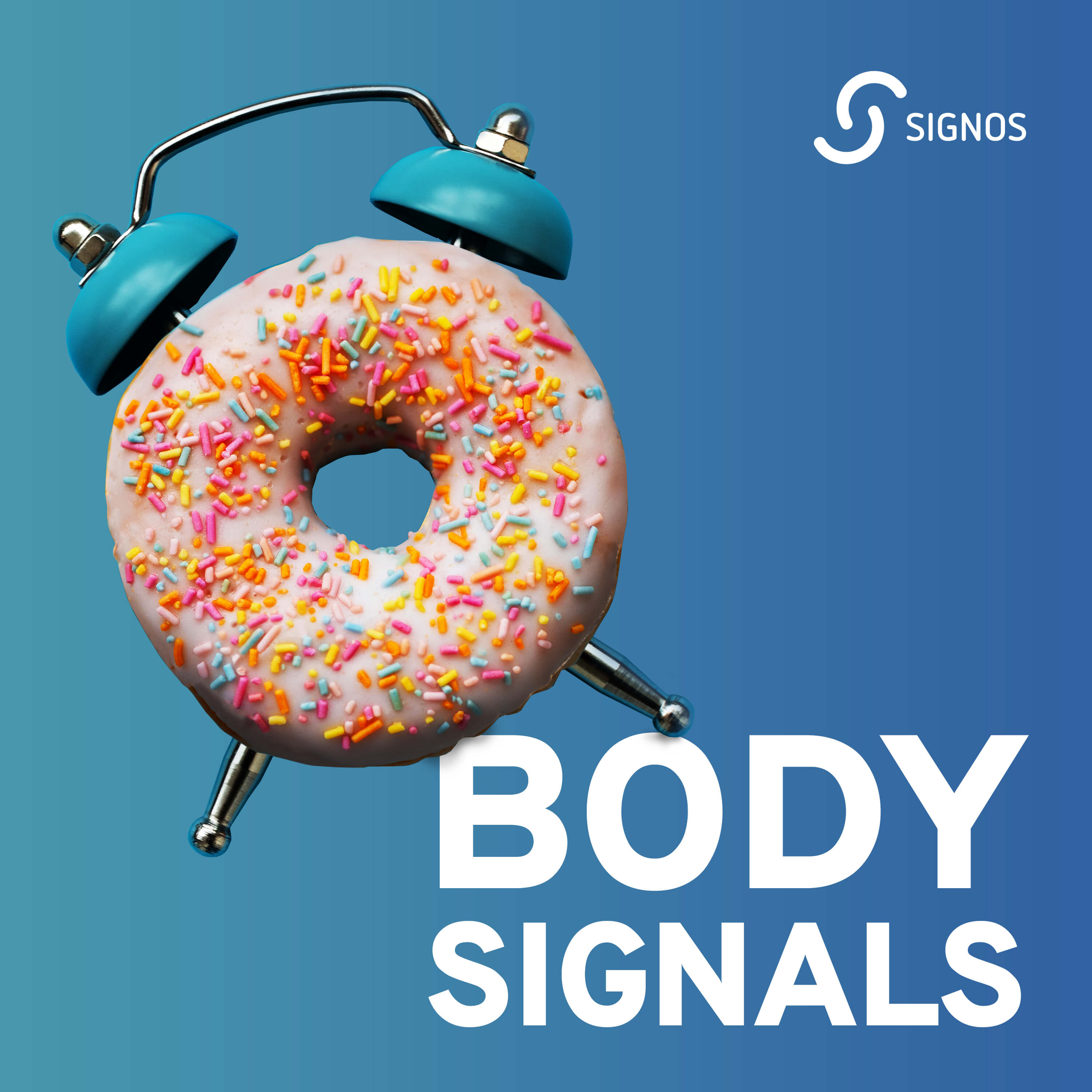Diabetes is a chronic disease characterized by the loss of insulin-secreting cells (pancreatic β-cells). Insulin is a hormone that regulates blood glucose levels. It carries glucose from the blood to tissues so the organs can use it for energy and growth.¹
When the body can’t produce enough insulin, blood glucose levels remain high and unregulated. Over time, symptoms of diabetes surface. Early diagnosis is the opportunity to manage blood glucose levels and improve quality of life.
What is the Difference Between Type 1 and Type 2 Diabetes?
Diabetes has many specific types, but the most common are type 1 and type 2 diabetes.²
Five to 10% of diabetes patients live with type 1 diabetes. In type 1 diabetes, insulin-secreting cells are non-functional due to the autoimmune destruction of pancreatic β-cells. Usually, those living with type 1 diabetes have no insulin production, so they need to inject the hormone insulin to regulate blood glucose levels.
Type 2 diabetes is the most common among diabetes, constituting 90 to 95% of diabetes patients. In type 2 diabetes, insulin-secreting cells are declined. Cells still produce insulin, but not enough to regulate blood glucose levels in a healthy manner. Insulin-secreting cells are progressively damaged, leading to insulin resistance (prediabetes). So there can be both lack and inefficiency of insulin hormone.
Those living with diabetes have a risk of complications caused by high blood glucose levels (hyperglycemia). Diagnosis is crucial for individuals to get the proper treatment for their unique disease progression.
{{mid-cta}}
What Causes Type 1 and Type 2 Diabetes?
Research suggests many causes, from genetics to environment, leading to type 1 and 2 diabetes. Besides many theories, the exact cause remains unknown.
In type 1 diabetes, the autoimmune response against insulin-secreting is thought to be triggered by genes, viruses, and environmental factors, including nutrition in infancy.3
Type 2 diabetes is a complex metabolic disorder characterized by insulin resistance and impaired insulin secretion. Multiple factors contribute to the development of type 2 diabetes, including genetics, family history, ethnicity, and lifestyle factors such as sedentary lifestyle and nutrition.4
Risk Factors for Type 1 and Type 2 Diabetes
The risk factors associated with type 1 diabetes are generally less clear than those of type 2 diabetes.5,6 Type 1 diabetes is an autoimmune disease in which the body's immune system mistakenly attacks the insulin-producing cells in the pancreas. The exact cause of type 1 diabetes is still unknown, and as a result, the risk factors associated with its development are less defined.
Type 1 Diabetes
Family history
A family history of type 1 diabetes poses a risk. Still, it can also develop in people with no history of the disease. Genetic susceptibility has a major role.
Being Caucasian
Populations with a higher susceptibility to type 1 diabetes include individuals of Caucasians, particularly Hispanic Caucasians.7
Age
Although type 1 diabetes can develop at any age, it is more commonly diagnosed in children, teenagers, and young adults.
Type 2 Diabetes
Increased blood sugar levels and insulin resistance
Early diagnosis is generally made by abnormal blood glucose levels and insulin resistance. Consistently high blood glucose levels can cause insulin resistance which can lead to type 2 diabetes if it remains untreated.
Overweight or obesity
Being overweight or obese is the most pronounced risk factor for type 2 diabetes. Weight can be an indicator of risk, but body composition comes forward. Two people can have the same weight yet different body fat and fat-free mass percentages. That’s why adiposity (having excess fat mass) disposes of a greater risk of type 2 diabetes. Here it’s important to remember that a healthy weight is certainly not the same for everyone.
Poor physical activity
A sedentary lifestyle has been associated with chronic low-grade inflammation. Physical inactivity, along with obesity, promotes insulin resistance.
Previous gestational diabetes
Gestational diabetes is a common pregnancy complication that can prospect type 2 diabetes. Diagnosis of management of gastrointestinal diabetes can be life-saving both for the mother and baby.8
Familiarity
A family history of type 2 diabetes increases the risk of the disease. A study investigating the familial risk of type 2 diabetes showed that if one sibling has type 2 diabetes, the risk increases two to threefold. And if two siblings have type 2 diabetes, the risk increases thirty-fold.9
PCOS
PCOS stands for polycystic ovary syndrome, a disorder characterized by abnormalities in the level of sex hormones, menstruation, and ovarian morphology.10 PCOS does not only cause problems in the productive system; it greatly affects metabolism too. Being overweight or obese can increase the risk of type 2 diabetes in women with PCOS.
Dietary factors
Food is the fuel for the body, and your nutrition determines the quality of the fuel and how your body functions. Certain eating patterns have been more pronounced, such as excessive consumption of processed meat, sugar-sweetened beverages, whole grains, and dietary iron.
Symptoms for Type 1 and Type 2 Diabetes
Type 2 diabetes is known for its slow and gradual development, which can make its symptoms easier to miss or attribute to other factors. Unlike type 1 diabetes, which often has a sudden onset, type 2 diabetes progresses over time, and individuals may not realize they have the condition until it has reached an advanced stage. This delayed diagnosis can have serious consequences for their health.
Both type 1 and type 2 diabetes share certain similarities in their symptoms, and if left unaddressed, both types can lead to severe health complications.11

Excessive thirst
Diabetes can cause high blood sugar levels, which leads to increased thirst. When blood sugar is elevated, the body tries to flush out the excess sugar through increased urination, resulting in dehydration and triggering the feeling of thirst.
Frequent urination (polyuria)
High blood sugar levels in diabetes can overwhelm the kidneys' ability to reabsorb glucose, increasing urine production. This can cause individuals to urinate more frequently, especially during the night.
Fatigue
Fatigue or persistent tiredness can be a symptom of diabetes. Due to insulin resistance, cells may not receive enough glucose even if blood glucose levels are high, leading to feelings of exhaustion and lethargy.
Blurry vision
Blurred vision or difficulty focusing can occur and may fluctuate throughout the day as blood sugar levels fluctuate.
Increased hunger (polyphagia)
In diabetes, the body's cells may not be able to effectively utilize glucose for energy. This can result in persistent feelings of hunger, even after eating a meal, as the body tries to compensate for the lack of usable energy.
Mood swings
When blood sugar levels are too high or too low, individuals may experience irritability, moodiness, or changes in emotional well-being.
Poor wound healing
High blood sugar levels can damage blood vessels and affect circulation, which can slow down the healing process for cuts, sores, or bruises.
Unintentional weight loss
Unexplained weight loss can be a symptom of undiagnosed or uncontrolled diabetes. When blood sugar levels are high, the body may lose calories and nutrients through increased urination, resulting in weight loss despite normal or increased appetite.
How are Type 1 and Type 2 Diabetes Diagnosed?
Diabetes can be diagnosed with laboratory blood tests, including:12
Fasting plasma glucose (FPG)
Your blood glucose levels are measured after 8 hours of eating and drinking. Normal FPG is less than 100 mg/dl. If the results are equal to or higher than 126 mg/dl, diabetes is diagnosed.
Oral glucose tolerance test (OGTT)
OGTT, also known as 2-hour plasma glucose, is measured two hours after drinking special solutions containing 75 to 100 g of glucose. The test helps doctors to evaluate how your body responds to a given amount of glucose. The results should be less than 140 mg/dl for a healthy person. Numbers 200 mg/dl or higher levels indicate diabetes.
Random plasma glucose test
It's the measurement of blood glucose tests at any time in the presence of severe diabetes symptoms. Results equal to 200 mg/dl or higher are required for diabetes diagnosis.
A1C
A1C shows average blood glucose levels for the past two to three months. The test doesn't require prior fasting or specific solutions to drink. Normal A1C is less than 5.7%. Results of 6.5% or higher diagnose diabetes.1
What is the Difference in Treatment for Type 1 vs. Type 2 Diabetes?
The goal of treating both type 1 and type 2 diabetes is to maintain a safe range of blood glucose levels. Still, there will be differences in the treatments. First, those living with type 2 diabetes may not need insulin to live, while those living with type 1 diabetes have to take insulin hormones.
Type 1 Diabetes Treatment
Insulin therapy
The goal of insulin therapy is to achieve and maintain target blood sugar levels to prevent both short-term complications, such as hyperglycemia (high blood sugar) and hypoglycemia (low blood sugar), as well as long-term complications associated with diabetes, such as cardiovascular disease, kidney damage, and nerve damage.
Insulin therapy requires careful monitoring of blood sugar levels, regular adjustment of insulin dosage based on individual needs, and proper education on insulin administration and self-care.
Different types of insulin therapy are available:3
Insulin injections
Regular insulin, also known as short-acting insulin, acts in 30 to 60 minutes, peaks in two to four hours, and lasts up to eight hours.
Rapid-acting insulin, which acts in 12 to 30 minutes, peaks in one to three hours, and lasts up to six hours. Rapid-acting insulins are lispro, aspart, and glulisine.
Ultra-rapid-acting insulin injections are also available. They act quicker and last for a shorter duration than rapid-acting insulins.
Long-lasting insulin is given up to two times a day based on its dosage and duration of action. U-100 glargine, U-300 glargine, degludec, and detemir are commonly used.
Insulin pumps
Insulin pumps are small electronic devices that deliver insulin continuously throughout the day and night.
The insulin pump consists of several components, including a reservoir that holds insulin, a small computerized pump that controls insulin delivery, and a disposable infusion set with a thin tube (catheter) inserted under the skin. The system delivers insulin every five minutes.
Inhaled insulin
Inhaled insulin, also known as inhalable insulin, is a form of insulin delivered to the body through inhalation rather than injection. It provides an alternative method of administering insulin for people living with diabetes who may have difficulty or aversion to injections.
Treating type 1 diabetes is paramount as it can have serious and life-threatening consequences if left untreated. One critical complication that can arise is diabetic ketoacidosis (DKA).13
When the body lacks insulin, it breaks down fat for energy, producing ketones. High levels of ketones can lead to a dangerous condition characterized by acidification of the blood, dehydration, and electrolyte imbalances. DKA requires immediate medical attention.
Persistently elevated blood sugar levels can damage organs. Kidney damage, known as nephropathy, can impair kidney function and even cause kidney failure. Nerve damage, or neuropathy, can cause tingling, numbness, and pain, eventually leading to complications such as foot ulcers and amputation. Additionally, diabetes can affect the eyes, leading to diabetic retinopathy and vision problems.
Type 2 Diabetes Treatment
Lifestyle interventions
Interventions to maintain healthy eating and an active lifestyle are prescribed to better manage blood glucose levels and insulin sensitivity.14 Personalized healthy eating, exercise plan, and weight management are essential for healthy living with diabetes.
Non-insulin antidiabetic agents
Biguanides (such as metformin), sulfonylureas, thiazolidinediones, α-glucosidase
Inhibitors (AGIs) are non-insulin antidiabetic agents that are used at different stages of diabetes treatment.15 Metformin is the most used antidiabetic drug to lower blood glucose levels and increase insulin sensitivity. Metformin is generally used in the first line of diabetes treatment.
Incretin-based therapies
Incretins (hormones) stimulate insulin secretion while suppressing glucagon following eating.
Insulin and insulin analogues
Insulin is generally prescribed when antidiabetic drugs are ineffective in reducing blood glucose levels.
Can Both Types Be Prevented?
Regarding diabetes prevention, it is important to understand the distinction between type 1 and type 2 diabetes. While type 1 diabetes cannot be prevented, there are preventive measures that can be taken for type 2 diabetes.
Unlike type 1 diabetes, an autoimmune condition that cannot be prevented, type 2 diabetes is largely influenced by lifestyle and genetic factors. Some key strategies include:
- Assessing prediabetes
- Adopting a healthy lifestyle
- Managing weight
- Avoiding tobacco and excessive alcohol consumption

Advancements in Delaying Type 1 Diabetes Development
While type 1 diabetes cannot currently be prevented, significant progress has been made in delaying its development. Recently, the first drug to delay the onset of type 1 diabetes has been approved.16
This medication, prescribed for individuals with a high risk of developing type 1 diabetes, has shown promising results in clinical trials. It modulates the immune system to slow down the destruction of insulin-producing cells in the pancreas. This breakthrough offers hope for delaying the onset of type 1 diabetes and provides additional time for individuals to manage their condition effectively.
Type 1 vs. Type 2 Diabetes Diet: What Should You Eat?
Maintaining a healthy and balanced diet is crucial in managing blood sugar levels for individuals with Type 1 and Type 2 diabetes. Proper nutrition can help manage glucose levels, lower the risk of complications, and increase quality of life.17
Diabetes patients need a healthy and balanced nutrition plan that is personalized for individual requirements and needs.18
Type 1 Diabetes Diet
Meal planning is essential as diabetes patients must match their insulin doses with their carbohydrate intake.
Carbohydrate counting
Learn to count carbohydrates to calculate insulin doses accurately. A registered dietitian can help you to determine your individualized carbohydrate goals.
Balanced meals
Aim for balanced meals that combine carbohydrates, proteins, and healthy fats. This helps slow down glucose absorption and promotes stable blood sugar levels.
Opt for whole grains, legumes, fruits, and vegetables, as they provide essential nutrients and are rich in fiber, which helps regulate blood sugar levels.
Be mindful of portion sizes to manage carbohydrate intake effectively.
Regular meal and snack timing
Maintain consistency in your meal and snack schedule to better match your insulin doses and prevent fluctuations in blood sugar levels.
After meals, individuals living with type 1 diabetes typically need to administer insulin according to their carbohydrate intake. Consult with your healthcare team to receive the appropriate insulin dosage and timing.
Type 2 Diabetes Diet
A healthy diet is vital for managing type 2 diabetes, as it helps control blood sugar levels, promotes weight management, and improves overall health. Consider the following dietary recommendations:
Nutrition
Focus on a well-balanced plate consisting of complex carbohydrates, lean proteins, and healthy fats.
Choose complex carbohydrates low in added sugars and fiber, such as whole grains, legumes, and vegetables.
Limit consumption of sugary beverages, foods, and processed snacks because they can increase blood sugar levels quickly.
Portion control is as important as nutrient composition.
Regular physical activity
Regular exercise or movement after meals can help improve insulin sensitivity, promote weight loss, and aid in blood sugar management.
After meals, incorporating physical activity, such as a brisk walk or light exercise, can help lower blood sugar levels. Consult with your healthcare team to determine the exercise plan based on your needs.
Learn More About the Impact of Blood Sugar on Overall Health with Signos’ Expert Advice.
Have you ever wondered about the profound impact of blood sugar health on your overall well-being? Discover the answers and gain valuable insights by exploring Signos' expert advice. Explore Signo's blog to learn more about nutrition and healthy habits.
Signos' Continuous Glucose Monitoring (CGM) device offers a groundbreaking solution to help you cope with blood sugar-related medical conditions. With Signos' CGM, you can track your progress, identify patterns, and adjust your diet and lifestyle for optimal blood sugar control.
Is Signos' CGM the right fit for you? Take a quick quiz to determine whether their device aligns with your needs and health goals.
Discover how to live well with diabetes with the help of Signos wearable CGM.
- Item 1
- Item 2
- item 3
Topics discussed in this article:
References
- Understanding A1C, Diagnosis. American Diabetes Association. Retrieved June 16, 2023 from: https://diabetes.org/diabetes/a1c/diagnosis#:~:text=Diabetes%20is%20diagnosed%20at%20blood,equal%20to%20200%20mg%2Fdl
- Diabetes: The Basics. Diabetes UK. Retrieved June 16, 2023 from: https://www.diabetes.org.uk/diabetes-the-basics#:~:text=The%20main%20difference%20between%20the,producing%20cells%20in%20your%20pancreas.
- Lucier, J., & Weinstock, R. S. (2023). Type 1 Diabetes. National Library of Medicine. Retrieved June 16, 2023 from: https://www.ncbi.nlm.nih.gov/books/NBK507713/
- Galicia-Garcia, U., Benito-Vicente, A., Jebari, S., Larrea-Sebal, A., Siddiqi, H., Uribe, K. B., & Martín, C. (2020). Pathophysiology of type 2 diabetes mellitus. International journal of molecular sciences, 21(17), 6275. Doi:10.3390/ijms21176275
- Bellou, V., Belbasis, L., Tzoulaki, I., & Evangelou, E. (2018). Risk factors for type 2 diabetes mellitus: an exposure-wide umbrella review of meta-analyses. PloS one, 13(3), e0194127. Doi:10.1371/journal.pone.0194127
- DeFronzo, R. A., Ferrannini, E., Groop, L., Henry, R. R., Herman, W. H., Holst, J. J.,& Weiss, R. (2015). Type 2 diabetes mellitus. Nature reviews Disease primers, 1(1), 1-22. Doi:10.1038/nrdp.2015.1
- Perry, D. J., Wasserfall, C. H., Oram, R. A., Williams, M. D., Posgai, A., Muir, A. B., & Brusko, T. M. (2018). Application of a genetic risk score to racially diverse type 1 diabetes populations demonstrates the need for diversity in risk-modeling. Scientific reports, 8(1), 4529. Doi:https://doi.org/10.1038/s41598-018-22574-5
- Zhu, Y., & Zhang, C. (2016). Prevalence of gestational diabetes and risk of progression to type 2 diabetes: a global perspective. Current diabetes reports, 16, 1-11. Doi:https://doi.org/10.1007/s11892-015-0699-x
- Hemminki, K., Li, X., Sundquist, K., & Sundquist, J. (2010). Familial risks for type 2 diabetes in Sweden. Diabetes care, 33(2), 293-297. Doi: 10.2337/dc09-0947
- Gambineri, A., Patton, L., Altieri, P., Pagotto, U., Pizzi, C., Manzoli, L., & Pasquali, R. (2012). Polycystic ovary syndrome is a risk factor for type 2 diabetes: results from a long-term prospective study. Diabetes, 61(9), 2369-2374. Doi:https://doi.org/10.2337/db11-1360
- Ramachandran, A. (2014). Know the signs and symptoms of diabetes. The Indian journal of medical research, 140(5), 579. PMID:25579136
- Diabetes Tests. Centers for Disease Control and Prevention (CDC). Retrieved June 16, 2023 from: https://www.cdc.gov/diabetes/basics/getting-tested.html#:~:text=A%20fasting%20blood%20sugar%20level,higher%20indicates%20you%20have%20diabetes.
- Prevent Diabetes Complications. Centers for Disease Control and Prevention (CDC). Retrieved June 16, 2023 from: https://www.cdc.gov/diabetes/managing/problems.html#:~:text=Common%20diabetes%20health%20complications%20include,how%20to%20improve%20overall%20health.&text=How%20to%20be%20heart%2Dhealthy%20if%20you%20have%20diabetes.
- Type 2 Diabetes. Centers for Disease Control and Prevention (CDC). Retrieved June 16, 2023 from: https://www.cdc.gov/diabetes/basics/type2.html
- Understanding Medicine -Type 2 diabetes. National Institutions for Health. Retrieved June 16, 2023 from:https://www.nhs.uk/conditions/type-2-diabetes/understanding-medication/
- FDA Approves First Drug That Can Delay Onset of Type 1 Diabetes. U.S. Food and Drug Administration. Retrieved June 16, 2023 from:https://www.fda.gov/news-events/press-announcements/fda-approves-first-drug-can-delay-onset-type-1-diabetes
- Uusitupa, M., & Schwab, U. (2023). Towards Individually Tailored Diets in Prevention and Treatment of Diabetes?. Nutrients, 15(12), 2649. Doi:https://doi.org/10.3390/nu15122649
- Diabetes and Nutrition Study Group, & European Association for the Study of Diabetes (EASD. (2023). Evidence-based European recommendations for the dietary management of diabetes. Diabetologia, 66(6), 965-985. Doi: https://doi.org/10.1007/s00125-023-05894-8









.jpg)






















